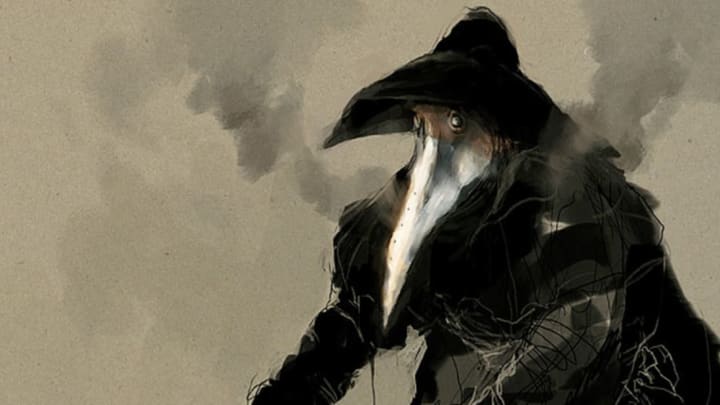The Bubonic Plague, also known as the Black Death, killed at least 75 million people on three continents. Described as the most lethal epidemic in history, the plague began in China in the 1330s and made its way through Europe from 1346 to 1353. In those times, physicians didn't know what was causing the disease to spread, but they did know it was highly contagious. To provide medical care and to protect themselves, doctors of the time invented the medieval version of a hazmat suit.
Each piece of the suit—the hat, the bird-like mask, the red glass eyes, the black overcoat, the leather breeches, and the wooden cane—is thought to have had an important function to either keep the disease away or scare it away. What doctors didn't know was that they were probably doing more harm than good—spreading the plague even more by exposing more people to their plague-covered articles of clothing.
The Hat
In the 14th Century, doctors would have been easily identifiable by their wide-brimmed black hats worn close to the head. Plague Doctors and their hats are similar to today's chefs and soldiers. It's thought that the wide-brimmed hat was used to partially shield doctors from bacteria.
The Bird-like Mask
Courtesy of Pixipui
What was with the bird's beak? Well, a common belief at the time was that the plague was being spread by birds. (We now know that rats and fleas were responsible for spreading the Black Death.) The doctors may have thought that dressing up in a bird-like gas mask, the plague would be transferred from the patient to the garment. This beak piece was also filled with vinegar, sweet oils, and other strong-smelling chemicals to mask the stench of death and unburied bodies.
The Red Glass Eyes
This one's pretty simple. Doctors thought that red eyepieces would make them insusceptible to evil (aka the deadly disease).
The Black Overcoat
To minimize skin exposure, doctors tucked the neckline of their long overcoat behind the mask. The coat extended down to the feet and was often completely coated with suet (a hard, white fat on the kidneys and loins of cattle and sheep, usually used in puddings and pastries) or wax. Doctors thought the suet could draw the plague away from the flesh of the infected or the wax could repel it. It's also thought that the wax could have just been used to keep bodily fluids from clinging to the coat.
The Leather Breeches
Similar to waders worn by fishermen, breeches covered each leg separately and were worn beneath the overcoat to protect the legs and groin from infection. Because the infection tended to attack the lymph nodes first, doctors paid close attention to cover and protect their armits, neck and groin.
The Wooden Cane
Doctors used the cane to direct family members on how and where to move infected patients and to examine them without direct contact.
